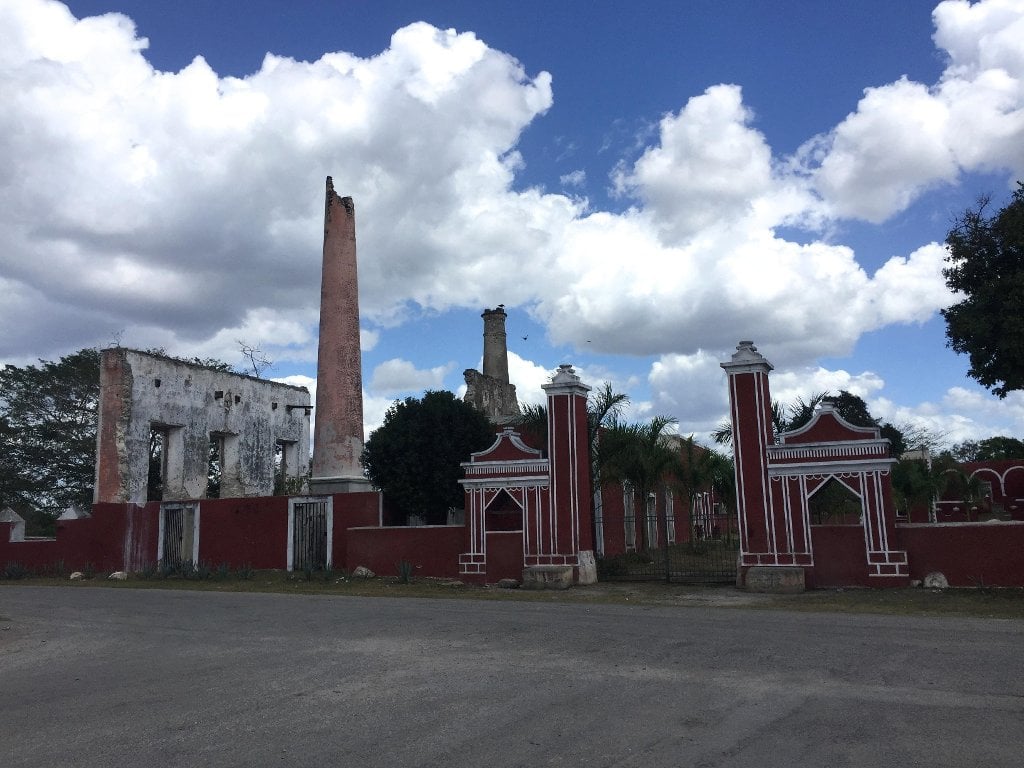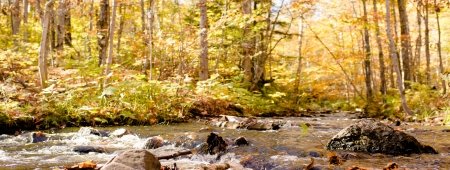David Flaspohler is on an exchange with the Universidad Autónoma de Yucatán, pursuing his ornithology research on how bird communities reflect land use changes, specifically with oil palm expansion for bioenergy. He will be writing several guest blogs during his travels. This piece is a tale of two peninsulas—the Yucatan in Mexico and the Keweenaw in Michigan.
In 1999, shortly after moving to Houghton, Michigan, I was just beginning to grasp a bit of the copper mining history of the region. I went on a tour of an enormous century-old mansion in a neighboring town, now converted into a bed and breakfast. Near the end of the tour of this 13,000 square foot colossus, we entered a high ceilinged drawing room with dark walls, which had a pleasantly uniform, pebbled paint texture.
Elephant hides, our guide said.
This single detail of ostentatious ornamentation encapsulated both the vulgar economic extravagance of the affluent and the remarkable global economic penetration of the Keweenaw more than a century ago. From this remote corner of northern Michigan, where winter can last eight months and snow falls in feet not inches, the owners in 1906 had reached out to then unimaginably distant Africa to procure the coarse skin of a few elephants to wallpaper a drawing room.
Fast forward in time and shift 5,000 kilometers south: I am looking at the lavish details of one of the dozens of mansions lining Paseo de Montejo in Merida, Mexico. I feel both surprised and preoccupied with the remarkable similarities between the Yucatan and Keweenaw peninsulas. Soon after arriving here in January, I discovered that both regions shared simultaneous spasms of economic growth, flowering and collapse. For about a century from the 1860s to the 1940s, both of these regions had a near monopoly on resources needed by a rapidly growing world.
"Like tiny microcosms of our planetary ecosystem, a hundred and fifty years ago, unprecedented prosperity washed across these two distant peninsulas, bringing a voracious appetite for resources to house, feed, and stoke the furnaces of industry."
Together with the fractured wreckage of industry, the shared experience of these two regions preoccupies me, even as I focus on my professional interest in the conservation biology of birds. I am here on a two-month research exchange that is part of a National Science Foundation-sponsored collaborative project with U.S. and Latin American colleagues to investigate the impacts of land use change and future bioenergy development on natural and human communities. Economic booms are traditionally associated with dramatic changes in how land is used.
"Forests are cut, mines are dug, or prairies are plowed under—and in every case, a natural community experiences an upheaval that affects the soils, waters, birds, mammals, insects and other creatures."
Which brings me to what drove the synchronized economic booms experienced by these two peninsulas: In Michigan, it was abundant copper, of a rare purity in a time when the nation was hungry for electric wire; for the Yucatan, it was the native henequen plant, a relative of agave. Henequen, or sisal as it was also known, produces a tough, flexible and remarkably durable fiber that could be spun into rope for a world still dependent on sailing ships with their miles of rigging and cordage. To understand how Merida had the highest concentration of millionaires on Earth in the early 1900s, you need only ask yourself this: If you were sending merchandise across the perilous oceans by sea before even the telegraph offered an opportunity to appeal for help, would you be willing to rig your sails with the second best rope available? Of course not. And you would pay any reasonable price for sisal, the gold standard of rope until nylon was invented during WWII. For almost 80 years, the Yucatan was virtually the only place producing sisal rope. It seems possible that at least some of the hundreds of Great Lakes sailing ships carrying copper from Houghton to Detroit and Boston were rigged with Yucatan henequen rope. Conversely, one can easily imagine Keweenaw copper in the wiring of the many stately haciendas built to manage the growth and processing of henequen.
So beginning in the mid-1800s, a few individuals became enormously wealthy as the almost exclusive continental providers of copper and sisal, both in great demand throughout the expanding western world. The monopoly lasted nearly a century. Then, in the 1940s, as suddenly as they arose, cheaper sources of copper closed the mines and the invention of nylon ended the sisal industry.
Today, the cities and surrounding towns on both peninsulas retain a tarnished luster of past greatness. Hundreds of crumbling smokestacks mark the locations of the henequen enterprises just as they do the copper ore stamp mills on the Keweenaw. It’s more difficult to perceive the ecological legacies from that century of profligate production and consumption. The forests of upper Michigan have regrown to a younger and structurally simpler approximation of what they once were. In the Yucatan, former henequen fields are now covered with tropical deciduous forest or maize.
"Few scientists were around to document the impact of these events on local biodiversity, water, soils, or human communities. Scattered anecdotes are all that we have to understand how these twin rapid land use changes influenced their respective ecosystems."
Although no one knows when the next natural resource boom will occur, many natural and social scientists are concerned that if and when fossil fuel prices increase whether due to scarcity or instability of traditional sources, bioenergy may become a powerful force for a new campaign of land use change. There is plenty of evidence to support such a possibility from Brazilian sugar cane/ethanol expansion into South American grasslands or Indonesian palm oil/biodiesel grown on former rainforest. If a new twenty-first century bioenergy economy takes hold in the Americas, our research team wants to be prepared. We plan to cover the foundational research that can be used to anticipate likely impacts and guide policy toward a land management that delivers local benefits to communities and minimizes negative impacts on the environment.
Acknowledgements: National Science Foundation, OISE-PIRE program and Kathy Halvorsen.
Michigan Technological University is an R1 public research university founded in 1885 in Houghton, and is home to nearly 7,500 students from more than 60 countries around the world. Consistently ranked among the best universities in the country for return on investment, Michigan's flagship technological university offers more than 185 undergraduate and graduate degree programs in science and technology, engineering, computing, forestry, business, health professions, humanities, mathematics, social sciences, and the arts. The rural campus is situated just miles from Lake Superior in Michigan's Upper Peninsula, offering year-round opportunities for outdoor adventure.






Comments